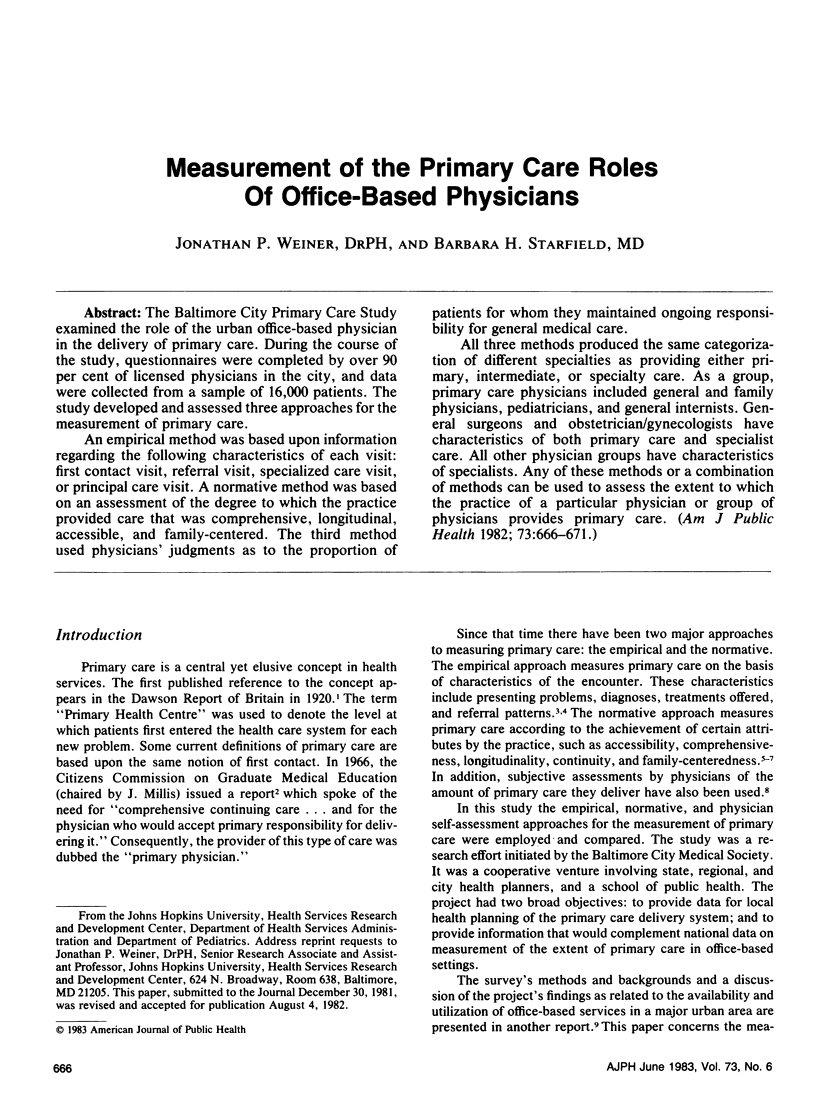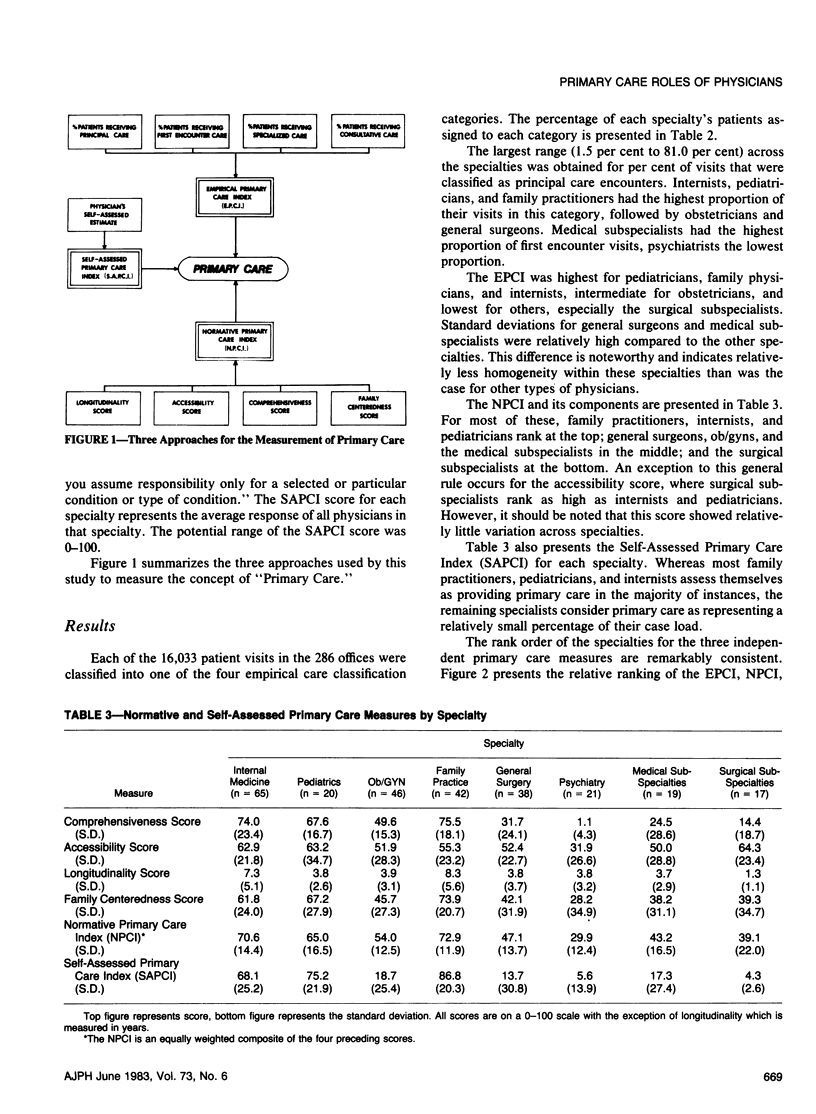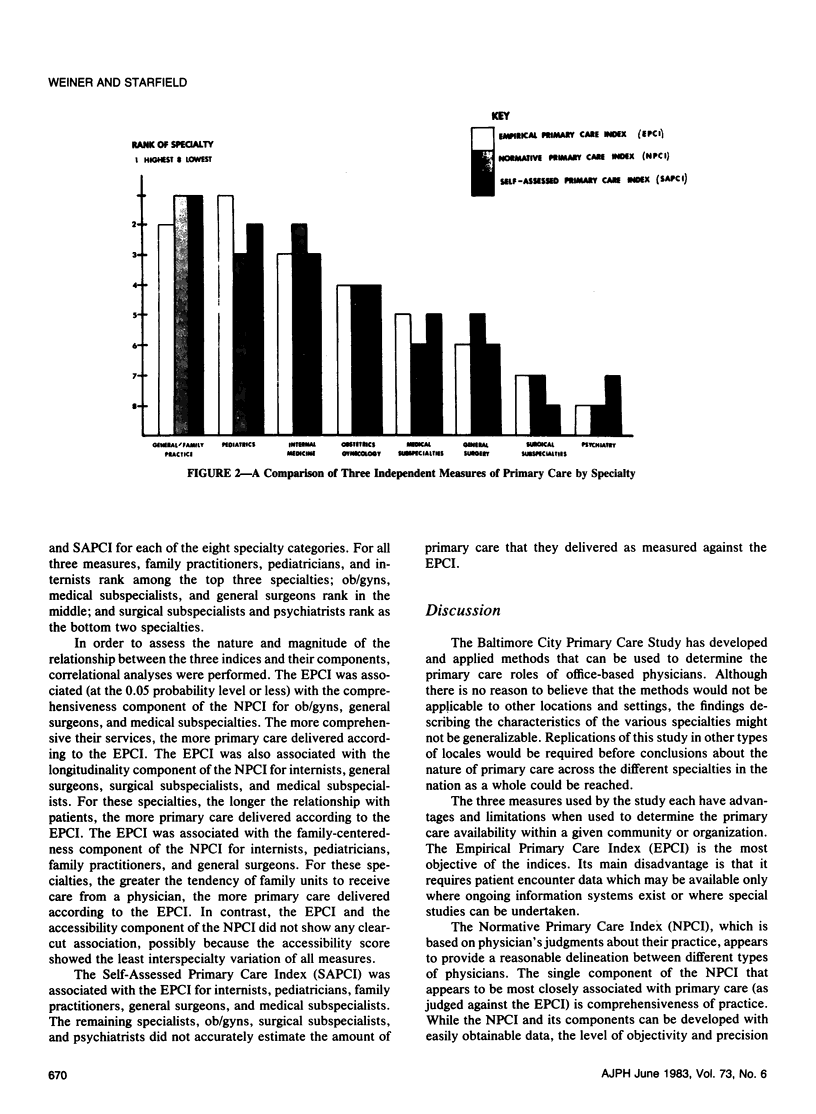Abstract
The Baltimore City Primary Care Study examined the role of the urban office-based physician in the delivery of primary care. During the course of the study, questionnaires were completed by over 90 per cent of licensed physicians in the city, and data were collected from a sample of 16,000 patients. The study developed and assessed three approaches for the measurement of primary care. An empirical method was based upon information regarding the following characteristics of each visit: first contact visit, referral visit, specialized care visit, or principal care visit. A normative method was based on an assessment of the degree to which the practice provided care that was comprehensive, longitudinal, accessible, and family-centered. The third method used physicians' judgments as to the proportion of patients for whom they maintained ongoing responsibility for general medical care. All three methods produced the same categorization of different specialties as providing either primary, intermediate, or specialty care. As a group, primary care physicians included general and family physicians, pediatricians, and general internists. General surgeons and obstetrician/gynecologists have characteristics of both primary care and specialist care. All other physician groups have characteristics of specialists. Any of these methods or a combination of methods can be used to assess the extent to which the practice of a particular physician or group of physicians provides primary care.
Full text
PDF





Images in this article
Selected References
These references are in PubMed. This may not be the complete list of references from this article.
- Aiken L. H., Lewis C. E., Craig J., Mendenhall R. C., Blendon R. J., Rogers D. E. The contribution of specialists to the delivery of primary care. N Engl J Med. 1979 Jun 14;300(24):1363–1370. doi: 10.1056/NEJM197906143002404. [DOI] [PubMed] [Google Scholar]
- Holmes C., Kane R. L., Ford M., Fowler J. Toward the measurement of primary care. Milbank Mem Fund Q Health Soc. 1978 Spring;56(2):231–252. [PubMed] [Google Scholar]
- Mendenhall R. C., Lewis C. E., DeFlorio G. P., Girard R. A. A national study of medical and surgical specialties. III. An empirical approach to the classification of patient care. JAMA. 1979 May 18;241(20):2180–2185. [PubMed] [Google Scholar]
- Starfield B. Measuring the attainment of primary care. J Med Educ. 1979 May;54(5):361–369. doi: 10.1097/00001888-197905000-00001. [DOI] [PubMed] [Google Scholar]
- Thacker S. B., Salber E. J., Osborne C., Muhlbaier L. H. Primary care in Durham County: who gives care to whom? Med Care. 1979 Jan;17(1):69–78. doi: 10.1097/00005650-197901000-00006. [DOI] [PubMed] [Google Scholar]
- Weiner J. P., Kassel L. E., Baker T. D., Lane B. H. Baltimore city primary care study: the role of the office-based physician. Md State Med J. 1982 Jun;31(6):48–52. [PubMed] [Google Scholar]



